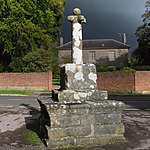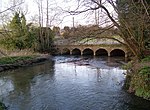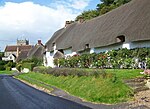Grovely Wood

Grovely Wood is one of the largest woodlands in southern Wiltshire, England. It stands on a chalk ridge above the River Wylye in Barford St Martin parish, to the south-west of the village of Great Wishford, within the Cranborne Chase and West Wiltshire Downs Area of Outstanding Natural Beauty. It is recognised for its nature conservation importance through designation as a County Wildlife Site. Among the species found here is the Purple Emperor butterfly.To the west of Grovely, on the same ridge, lies another large block of woodland, Great Ridge Wood. Adjacent to Grovely, to the north, lies the grassland Site of Special Scientific Interest Ebsbury Down. Another SSSI, Baverstock Juniper Bank, is also nearby. There is much Iron Age and Roman archaeology in the vicinity of the woods. A Roman road runs east to west through the centre of the wood, and at the western end are the Iron Age/Romano-British settlements of Hanging Langford Camp and Church End Ring. Just to the north of the woods lie the sites of two Iron Age hillforts, Ebsbury, and Grovely castle; as well as an Iron Age farm enclosure, known as East Castle.
Excerpt from the Wikipedia article Grovely Wood (License: CC BY-SA 3.0, Authors, Images).Grovely Wood
First Broad Drive,
Geographical coordinates (GPS) Address Nearby Places Show on map
Geographical coordinates (GPS)
| Latitude | Longitude |
|---|---|
| N 51.107 ° | E -1.932 ° |
Address
First Broad Drive
First Broad Drive
SP3 4SQ , Barford St. Martin
England, United Kingdom
Open on Google Maps









